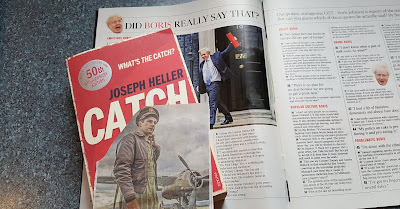That’s Some Catch – By Duncan Harley

As our country teeters on the brink of old-Etonian Boris I have found a bit of light relief on Channel 4. Unlike the somewhat Glasgow-centric offerings available from the new Scottish Channel - read Tutti Frutti, Paisley-Punk-land or some hoary old history of Glasgow’s Central Station – 4 occasionally leads the pack. We are talking Catch-22 here. Yes, I know that there was a book then a 20 th Century film and some kind of abandoned prime-time mini-TV series. But hey, the new take on Heller isn’t that bad really. The uniforms are right and even the CGI is kind of passable if you ignore the neatly choreographed flying formations – daytime B-25 bomber pilots tended to jiggle about a bit in the face of groundfire rather than just steer right through it. But hey, this is Heller’s masterpiece so a bit of black-humoured in-flight management is kind of in order. If only someone had taken the time to sort out the overall colour masking. This pumped-up Clooney series jumps back and fo

